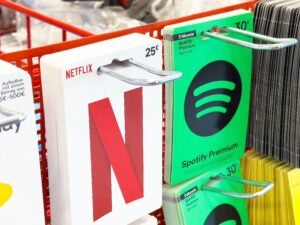 In the race to be the open internet’s default cookie-based advertising ID, The Trade Desk has jumped out to an early head start.
In the race to be the open internet’s default cookie-based advertising ID, The Trade Desk has jumped out to an early head start.
The Trade Desk has allowed other ad tech companies to freely sync with its cookie pool for years, and last year it fully commercialized that product with the launch of the unified ID solution. Index Exchange was the first SSP to publish results from a campaign using the unified ID last year.
And on Tuesday, PubMatic released a case study about its integration with the unified ID solution based on campaigns from the beginning of 2019. Using The Trade Desk ID with other integrated vendors brought match rates to almost 100% when impressions included a cookie, similar to Index Exchange’s reported results, and doubled the chances that the buy-side partner would bid on the inventory, according to PubMatic.
PubMatic works with any identity graph a customer wants to use, said product management VP Katherine Strieder. That could include a vendor like Criteo with its own graph, a cross-device data company or the DigiTrust ID, an industry collaboration helmed by the IAB Tech Lab.
“People use a lot of different words for a graph, but it boils down to one thing: identifying online users and recognizing them in other environments,” Strieder said.
PubMatic may be impartial to online ad IDs, but Strieder said The Trade Desk stands out right now because it’s “known to and attractive to the buy side.”
Publishers may collect the online cookies and own the user relationship, but it’s advertisers – who control the cash – that dictate supply chain adoption.
“There are worthwhile graphs, but if you don’t have buy-side interest then nobody is buying it,” Strieder said.
The Trade Desk doesn’t profit from its ID solution, but it does empower the company to be a controlling player in the programmatic ecosystem, and it also means data companies and other ad tech exchanges must integrate with the unified ID to sync well with programmatic demand. For instance, one of the important results from the PubMatic case study was that bid counts and CPMs increased from other, smaller DSPs that also integrate with unified ID.
Attracting other DSPs is the most difficult hurdle for the unified ID solution, because DSPs typically offer their own identity services and aren’t interested in empowering a direct competitor. The same is true for other ID collaborations, like DigiTrust or the Advertising ID Consortium, which struggle to secure buy-side cooperation.
The Trade Desk keeps a close bead on industry identity initiatives as a board member for the IAB Tech Lab and the ID consortium.
AdExchanger Daily
Get our editors’ roundup delivered to your inbox every weekday.
Daily Roundup
“We’ve been involved with those, because we think it’s a problem worth solving as an industry,” said Tim Sims, The Trade Desk’s SVP of inventory partnerships. “The objective has always been to go from many IDs to some IDs, not just to one.”
Strieder said she isn’t interested in the political machinations among programmatic companies, when collaboration could help overcome the gap between logged-in walled garden platforms and the open web, where advertisers don’t trust results because they can’t track campaigns.
“This is an opportunity to make digital advertising what it should have been all along: something accurate for advertisers and relevant to users,” she said.












